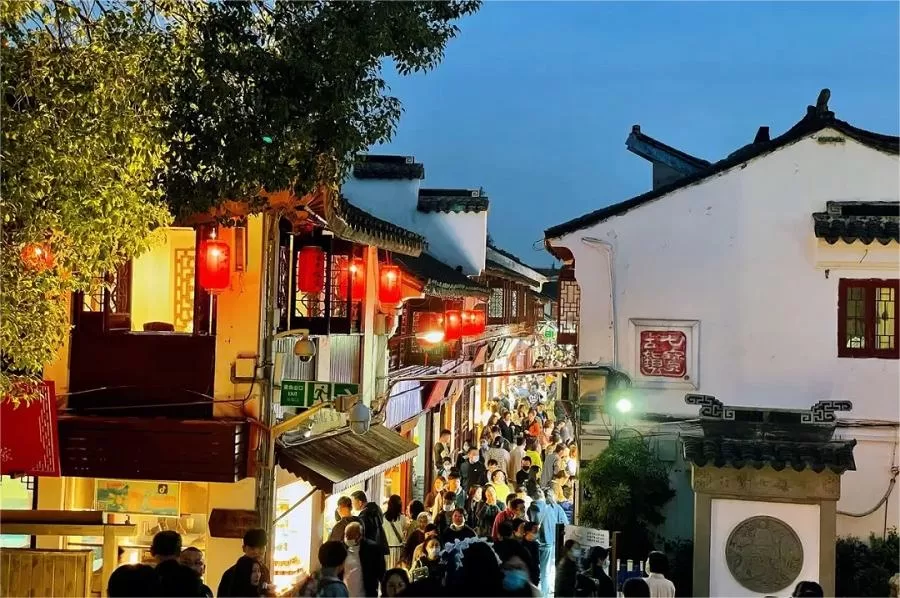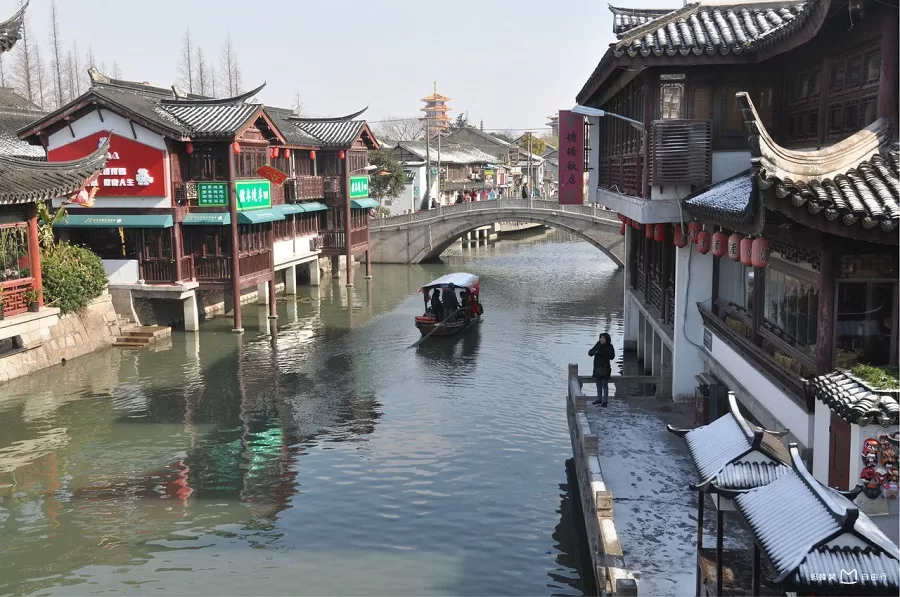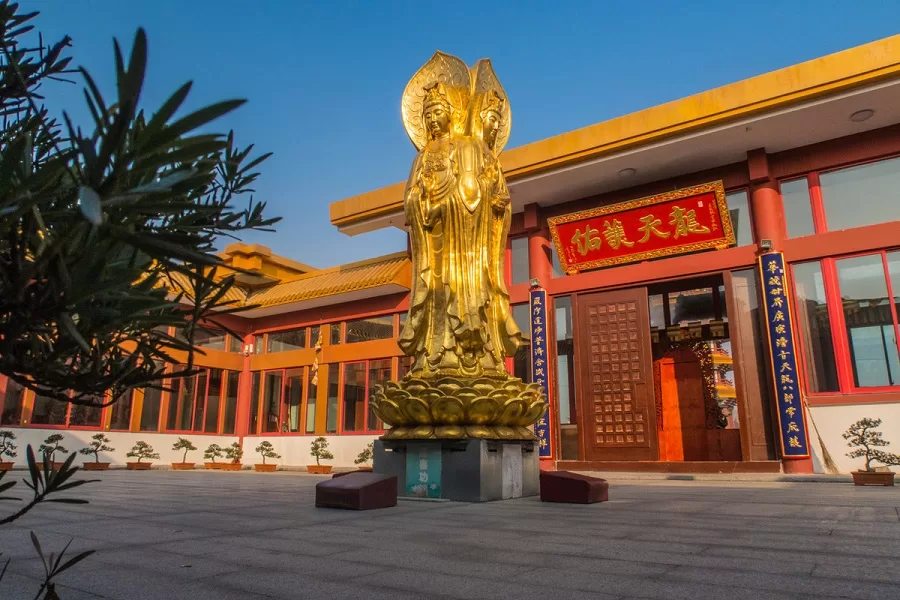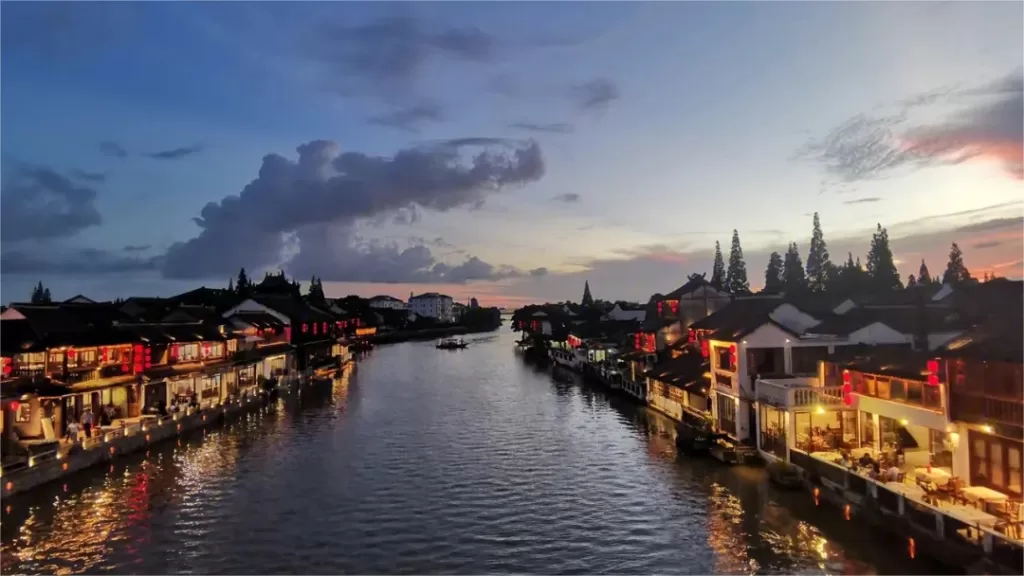Qibao Ancient Town (七宝古镇) is a historic water town located in the southwest of Shanghai, China. It has a history that dates back over a thousand years and is known for its charming waterways, traditional architecture, and rich cultural heritage. Qibao means “seven treasures,” and the town is named after the seven treasures of Buddhism.
The town’s most distinctive feature is its well-preserved canal system, which includes nine bridges and many waterways that flow throughout the town. Visitors can take a boat ride to admire the scenic views or stroll along the old streets lined with ancient buildings that have been restored to their former glory.
Qibao Ancient Town is also famous for its food and handicrafts. Local specialties include glutinous rice dumplings, sugar-coated haws, and sesame cakes. Visitors can also watch traditional craftsmen making intricate paper-cutting, embroidery, and woodcarving products.
Table of Contents
- Basic Information
- Location and Transportation
- History of Qibao Ancient Town
- Highlights of Qibao Ancient Town
- Vlog About Qibao Ancient Town
- Useful Tips Summarized from Reviews
- Other Ancient Towns in Shanghai
Basic Information
| Website | https://www.shqbgz.com/ |
| Estimated Length of Tour | Over 3 Hours |
| Ticket Price | Free, but there is a small charge for the temple and museum |
| Opening Hours | 24 hours, but most street stalls and vendors operate from 9.00 to 21.00 |
| Telephone Number | 0086-021-64610016 0086-021-64615308 |
Location and Transportation
Qibao Ancient Town is located in the Minhang District of Shanghai, China, approximately 18 kilometers southwest of the city center. It is situated along Qibao Creek, which is a tributary of the Huangpu River. The town is easily accessible by public transportation, including a metro line and various bus routes.
Bus: Take bus 87, 91, 92, 186, 189, 196, 198, 709, 735, or 803, get off at Qibao Stop (七宝站), and walk about 400 meters to the south to reach the ancient town.
Metro: Take metro line 9, get off at Qibao Station, get out from Exit 2, and walk about 300 meters to the south to reach the ancient town.
History of Qibao Ancient Town
Qibao Ancient Town has a history that dates back over one thousand years to the Northern Song Dynasty (960-1127 AD). During this time, the town was an important commercial hub and a center for handicraft production, particularly in the areas of textiles and food. The town’s prosperity continued into the Ming (1368-1644 AD) and Qing (1644-1912 AD) Dynasties, when it became known for its skilled artisans and its cultural heritage.
In the early 20th century, Qibao Ancient Town underwent significant development and expansion, with the construction of new buildings and infrastructure. However, during the Second Sino-Japanese War (1937-1945), the town was heavily damaged by bombing and suffered a decline in its economic and cultural importance.
In the 1990s, the Shanghai government launched a restoration project to preserve and promote Qibao Ancient Town’s cultural heritage. The project involved the restoration of many of the town’s historic buildings, the development of tourism infrastructure, and the promotion of traditional handicrafts and local cuisine. Today, Qibao Ancient Town is a popular tourist attraction, offering visitors a glimpse into the town’s rich history and cultural heritage.
Highlights of Qibao Ancient Town
Qibao Old Street

Qibao Old Street is a charming pedestrian street in Qibao Ancient Town, Shanghai. It is lined with traditional buildings that date back to the Ming and Qing Dynasties, and is a great place to experience the town’s history and culture. Visitors can stroll along the street and explore the many shops, food stalls, and handicraft workshops, offering a variety of goods and souvenirs. The street is also home to several historic buildings, including the Qibao Temple and the Qing Dynasty Post Office.
Bridges and Canals

The nine ancient stone bridges in Qibao Ancient Town are a major attraction and symbol of the town’s rich cultural heritage. Each bridge has a unique design and history, such as the Fangsheng Bridge, which is known for its dragon sculptures, and the Bridge of Longevity, which features carvings of mythical creatures. The canals that run through the town add to the charming atmosphere and offer visitors the chance to take a boat ride and admire the scenery. The bridges and canals are also the backdrop for many of the town’s cultural events and festivals, making them an integral part of Qibao Ancient Town’s cultural identity.
Qibao Temple

Qibao Temple has a history that dates back over 1,000 years and is considered a significant cultural and religious site in the area. The temple has undergone several renovations and restorations over the centuries, resulting in a unique architectural style that blends traditional Chinese and Buddhist elements. Visitors can explore the temple’s halls and courtyards, which are filled with statues, paintings, and other religious artifacts.
Local Cuisine

Qibao Ancient Town is known for its delicious local cuisine, which offers a taste of traditional Shanghai and regional specialties. The town is famous for its street food, such as glutinous rice dumplings, sugar-coated haws, sesame cakes, and steamed buns filled with pork or vegetables. Visitors can also enjoy a variety of snacks, including crispy fried dough sticks, roasted sweet potatoes, and candied fruits. For a more substantial meal, there are plenty of restaurants and tea houses serving up classic Shanghai dishes, such as braised pork belly, stir-fried noodles, and soup dumplings.
Vlog About Qibao Ancient Town
Useful Tips Summarized from Reviews
Enjoy the Scenery: The ancient town is not large, but it offers charming scenery, especially in spring. Take a leisurely stroll to experience the tranquility away from the hustle and bustle of the city.
Main Streets: The main thoroughfare consists of North and South Streets. North Street mainly features antique shops and jewelry stores, while South Street is known for its diverse food options.
Normal Souvenirs: Inside the old streets, you’ll find typical scenes found in most ancient towns, with shops selling goods sourced from Yiwu, a major wholesale market in China.
Seating Availability: Many food stalls may not have seating arrangements. As autumn approaches, it can get chilly, especially when standing outside to eat.
Unique Experience: One of the unique experiences of Qibao is the juxtaposition of ancient scenery with modern elements. While admiring the picturesque view of the Jiangnan-style bridges and waterways from the arched bridges, you may hear the roaring sound of airplanes passing overhead, creating a sense of time and space crossing between the past and present.




